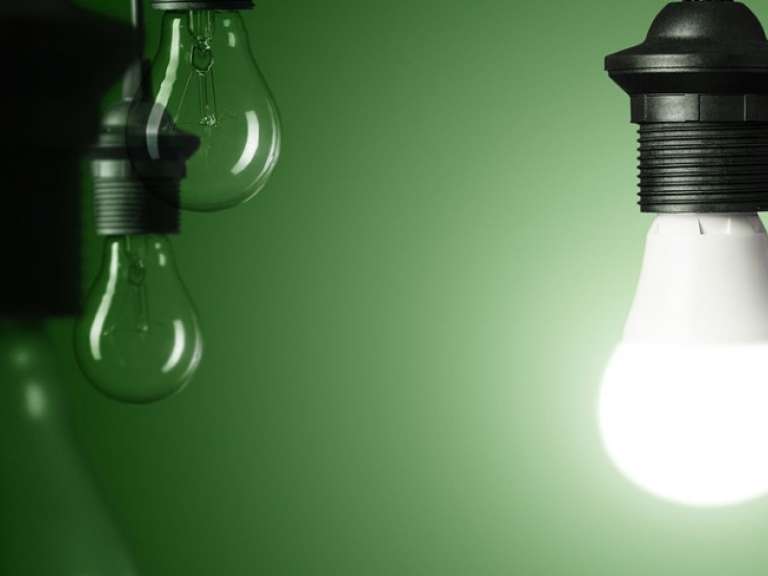What's Driving Consumer Energy Demand?
Penny HitchinSmart appliances, electric vehicles, and the smart grid will all play a vital role in consumer energy demand management.

Global energy demand is affected by many factors. And while some are easy to predict; others are not. Population, economic growth, and energy efficiency improvements, such as LED light bulbs, all play a part in determining demand. On an individual level, household energy, transportation, and lifestyle are the main influences on consumer energy demand. On a global level, the International Energy Outlook 2017 (IEO2017) forecasts energy demand will increase by nearly 50 percent over the 28-year period from 2012 to 2040.
There are alternatives to amassing new generating capacity to meet this projected increase in consumer energy demand. Advances in smart grid and appliance technology, for example, could greatly aid demand management, smoothing out some of the peaks and troughs.
As the energy market evolves and smart grids increasingly come into play, households will be able to employ energy demand management, or demand-side management (DSM), in order to get a better value. Intelligent grids and smart appliances will make it feasible for consumers to modify demand by changing their behavior in response to financial incentives. The goal of DSM is to encourage the consumer to use less energy during peak hours, replacing this with off-peak supply for activities that are not time sensitive. With the growth of small-scale renewables and distributed generation, the consumer who installs a grid-connected solar PV or a small wind turbine will also be a supplier. A smart grid can digitally process information about energy supply, demand, and patterns of consumption in order to route power efficiently from the point of production to the end-user on the network. A modern grid with two-way flow of energy, communication, and control capabilities will offer new opportunities for making the best use of available energy. For example, smart washing machines will receive information about the price and availability of electricity, enabling consumers to do their laundry when demand is at its lowest and power is at its cheapest.
While growing population and rising standards of living exert an upward thrust on demand globally, a concerted drive for energy efficiency—in construction, buildings, transport, and appliances—aims to reduce usage. In the EU, where all light bulbs, cars, and most electrical appliances must carry an energy label that indicates their efficiency, household energy consumption decreased by 11 percent between 2005 and 2014, according to the European Environment Agency. Government legislation around the world has seen incandescent light bulbs phased out in favor of more energy-efficient alternatives, such as LED bulbs. Manufacturers continue to develop more efficient appliances for use in the home, office, and industry.
The technology exists to make buildings far more energy efficient. New homes and commercial buildings can be built to produce as much energy as they use on an annual basis. Zero net energy (ZNE) buildings combine high levels of energy efficiency with solar or other renewable energy systems to meet the building's average energy load over the course of a year. Approaches like Passivhaus construction—a comprehensive low energy standard for new buildings—prove that houses can be built to have lower energy demand. It's not just new technology that's influencing efficiency, either. Traditional techniques of building with adobe bricks, such as those used in vernacular buildings in the American southwest, keep buildings naturally cool in summer and warm in winter, reducing the need for air conditioning and heating.
The battery-powered electric car has been around for more than 100 years. In 1900, nearly a third of the 4,500 cars produced in the United States were battery powered. Battery limitations meant that the electric vehicle was completely overshadowed by petrol and diesel engines, however. A century later, the electric vehicle (EV) has finally caught up. In the United States, there are now over half a million EVs on the roads. The EU and China are also pushing forward in the transition to battery-powered and electric vehicles. Battery technology is developing rapidly, and automobile manufacturers are vigorously marketing new EV models. There could be as many as 20 million hybrid and plug-in electric vehicles on the road by 2020.
Additionally, smart grids can provide synergy between renewable energy and EV charging. Adding EVs to the grid may be a challenge, but it is also an opportunity to utilize off-peak power. Smart charging could allow EVs to be integrated into the grid and make better use of renewable energy, as well as help balance the grid. Smart grid technology will also enable utilities to offer flexible pricing and other tariff incentives. This would help meet the demand from large EV fleets by encouraging consumers to reduce consumption during peak times. On the other hand, continuing development of battery technology and fast charging could bring about the use of EV batteries to supply power to the grid at times of high electricity demand when the vehicle is not in use.
Looking ahead, the smart consumer will use smart metering to interact with the intelligent grid and use distributed electricity more efficiently. Demand management will mean consumers get better value from their supply while balancing peak load demand. It may take some time for this vision to come to fruition, but developments are happening rapidly, and smart utilities have demand management firmly in their sights.
Eradicating hazards completely is impossible, but new power plant safety innovations can mitigate risk.
New technologies are establishing the future of wind machines in locations that are currently unable to harness wind power.
Alongside renewable energy technologies, the role of gas turbines in the 21st century electricity mix is assured.